Designing Web Usability: The Practice of Simplicity
Jakob Nielsen, 1999
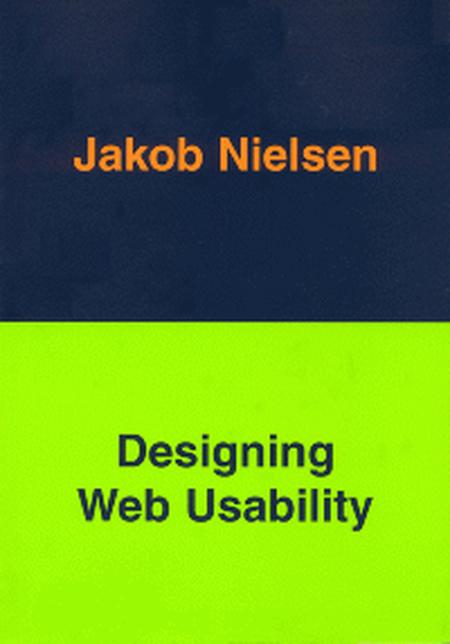
Over 250,000 Internet professionals around the world have turned to this landmark, definitive guide to usability. From content and page design to designing for ease of navigation and users with disabilities, Designing Web Usability delivers complete direction on how to connect with any web user, in any situation. 432 pages, full color illustrations. (New Riders Publishing.)
Please buy through these links: Amazon pays me a referral fee that doubles the share of the purchase price that goes to the author, giving me time off from other projects to write new books
Reviews and Articles About the Book
- Educational Technology Blog: 10 Years of Web Usability (2010): "those chapters which focus on technique rather than technology are still relevant and many have become accepted practice."
- boschatzberg.com (2009): ""For the most part, the guidelines in this book still apply today, even though the book was published in 1999. [...]This book is a must-read for anyone working on the web."
- stevenclark.com.au (2008): "Well worth a read and still relevant and correct."
- Weinberg's research blog (2008): "I'm glad I read this book. [...] Nielsen has a way of saying things very simply and clearly."
- FlashMagazine (2002): "Surprisingly, as time goes by, "Designing Web Usability" becomes more useful [...] you will return to this book many times."
- Builder.com (July 2001): "an undeniable standard ... this book is necessary for those who want to understand the Web and its users"
- Rough Notes Magazine (May 2001): Designing Successful Web Sites: Put usability first; practice simplicity: "Scores of books purport to offer insight into successful Web site design. At least one actually does. ... It is recommended reading for agency principals and Web managers alike."
- Free Pint Bookshelf (March 2001): "It is a testament to the usefulness of this book that it has lived beside my terminal at work for the last few weeks as I put the theory into practice."
- Business Week: Jakob Nielsen's Gospel of Good Web Design (March 2, 2000): "should [...] be read by any executive with responsibility for managing online operations"
- NewMedia (September 2000): Who Says Design Should be Simple?: "No one with whom I've spoken about Designing Web Usability has come away unaffected" [...] "the most important book of the year"
- Danny Yee's Book Reviews (2000): "The most important book on web publishing yet to appear."
- Linux ISO: " I couldn't put it [the book] down! The author, Jakob Nielsen, is entertaining, direct, and obviously not one to join the latest trend of the day."
- Professional WebMaster Magazine (July/August 2000): "explains lots of factors that taken individually fall into the 'obvious' category and when juxtaposed in an intelligent fashion lead to a far deeper understanding of the subject than you would have been able to arrive at on your own"
- Builder.com (July 2001): "an undeniable standard ... this book is necessary for those who want to understand the Web and its users"
- Rough Notes Magazine (May 2001): Designing Successful Web Sites: Put usability first; practice simplicity: "Scores of books purport to offer insight into successful Web site design. At least one actually does. ... It is recommended reading for agency principals and Web managers alike."
- Internet World UK (March 2000): "if the Web design company you are employing hasn't got a copy of this book on its shelves, you'll know to go somewhere else "
- Free Pint Bookshelf (March 2001): "It is a testament to the usefulness of this book that it has lived beside my terminal at work for the last few weeks as I put the theory into practice."
- Telecomwire (October 2000): "a must for any business who wants to create a strong online presence"
- New Architect (August 2000): Keeping Sites Simple : "Nielsen has done a great service to the entire Web community by showing why simplicity in design is important, and by clearly explaining how to achieve it"
- Digital Libraries Magazine (June 2000): "When I visit a hard-to-use site, it often seems clear that Nielsen's advice would have made the site easier to use. It's not that the web is inherently hard to use or that I can't figure out a particular site; the site's designers are to blame."
- Slashdot (April 27, 2000): " well researched , sensible, and right on target [...] impressively concise and comprehensive"
- Sydney Morning Herald, Australia, Science rules in Web design (April 3, 2000): "relentlessly sensible"
- Ex Libris: E-Zine for Librarians and Other Information Junkies (March 10, 2000): "I can't think of a more valuable resource for both amateur and experienced webmasters"
- Chicago Tribune, reading list about current technology (March 6, 2000): "Jakob Nielsen knows more about what makes Web sites work than anyone else on the planet "
- WebReference Newsletter, December 1999: We interview the Web's usability czar about his new book and the Web's future
- Author interview on Amazon.com , January 2000
- Le Journal du Net (French August 2000): Conception de sites Web : l'art de la simplicité
- PC World (Danish December 2001): Gode råd fra Nielsen
Advance Reader Comments on Designing Web Usability: The Practice of Simplicity
"Eighty gajillion things have been written about the Web. Do we need one more? Answer: Yes! If it's from Jakob Nielsen. Designing Web Usability: The Practice of Simplicity is a masterpiece. Jakob knows his stuff like, literally, no one else! This book is a pleasure to read. And invaluable. May simplicity rule!" --Tom Peters, Management expert, Bestselling author ( In Search of Excellence , The Circle of Innovation , et al)
"Jakob is hands down the most perceptive and articulate person working in this field today, and I was really looking forward to getting my hands on this. Needless to say, I wasn't disappointed. Designing Web Usability should go a long, long way in making the Web a far more appealing, effective and user-friendly medium. For the good of us all, let's hope every Web designer in cyberspace reads it!" Sam Vincent Meddis, Technology Editor, USATODAY.com
"With Designing Web Usability: The Practice of Simplicity , Jakob Nielsen proves what many of us thought after reading Usability Engineering -- his books are indispensable tools for Web site architects and designers. With Designing Web Usability , Nielsen offers a comprehensive overview of the practical problems to be solved in web sight design. He goes at the "what" and the "how." He explains in clear prose and describes using current examples of what is right and what is wrong with Web sites seen by millions. If you follow Nielsen's instructions carefully you will be rewarded with faster Web projects and satisfied Web customers. There is no reason to make the same mistakes others have made, and no reason to make your users frustrated by your Web site's design. Designing Web Usability goes a long way toward solving today's problems today." Henry Lichstein, VP, Citibank
"Through the use of both good and bad examples with an easy-to-read style, Jakob does a great job exploring Web site design and navigation from a management perspective. The fully e-commerce-enabled site of the future needs to pay attention to the non-monetary forms of currency (time, attention, trust & convenience). This book can help show you the way." Mitchell Levy, President, ECnow.com, Executive Producer, ECMgt.com
"The web design tips in this book are practical - it is based on research rather than opinion and presented in an accessible way. Most every web design question I've heard lately is addressed in this book. The web sites used as examples help ground the guidelines in reality - a corporate site, intranet, e-commerce, or application site could all benefit from this wisdom. This is a great way to avoid the mistakes that other sites have made without replicating them oneself!" Stacey Ashlund, Usability Manager, Infoseek (part of the GO Network)
"This text is a must-read for anyone involved with site design." N.J. Stoyanoff, Ph.D., Director of E-Business, Ogilvy & Mather
"Jakob Nielsen's timing is perfect. The explosion of the Internet has produced a myriad of ways to design and present Web-based content. By focusing on the user experience, these guidelines map the way to happier customers , brand loyalty, and success on the Web for businesses of every kind." Raymond G. Nasr, Director, Office of Corporate Affairs, Novell, Inc.
Table of Contents
Preface
Preface to the 7th printing of the book
1. Introduction: Why Web Usability?
- Art Versus Engineering
- About the Examples
- A Call for Action
- What This Book Is Not
- Bad Usability Equals No Customers
- Why Everybody Designs Websites Incorrectly
2. Page Design
- Screen Real Estate
- Data Ink and Chart Junk
- Cross-Platform Design
- Where Are Users Coming From?
- The Car as a Web Browser
- Color Depth Getting Deeper
- Get a Big Screen
- Resolution-Independent Design
- Using Non-Standard Content
- Installation Inertia
- Helpful Super-Users
- When Is It Safe to Upgrade?
- Collect Browsers
- Separating Meaning and Presentation
- Platform Transition
- Data Lives Forever
- Response Times
- Predictable Response Times
- Server Response Time
- The Best Sites Are Fast
- Speedy Downloads, Speedy Connections
- Users Like Fast Pages
- You Need Your Own T1 Line
- Understanding Page Size
- Faster URLs
- Glimpsing the First Screenful
- Taking Advantage of HTTP Keep-Alive
- Linking
- Link Descriptions
- Link Titles
- Guidelines for Link Titles
- Use Link Titles Without Waiting
- Coloring Your Links
- The Physiology of Blue
- Link Expectations
- Peoplelinks
- Outbound Links
- Incoming Links
- Linking to Subscriptions and Registrations
- Advertising Links
- Style Sheets
- Standardizing Design Through Style Sheets
- WYSIWYG
- Style Sheet Examples for Intranets
- Making Sure Style Sheets Work
- Frames
- <NOFRAMES>
- Frames in Netscape 2.0
- Is It Ever OK to Use Frames?
- Borderless Frames
- Frames as Copyright Violation
- Credibility
- Printing
- Conclusion
3. Content Design
- Writing for the Web
- The Value of an Editor
- Keep Your Texts Short
- Copy Editing
- Web Attitude
- Scannability
- Why Users Scan
- Plain Language
- Page Chunking
- Limit Use of Within-Page Links
- Page Titles
- Writing Headlines
- Legibility
- Online Documentation
- Page Screenshots
- Multimedia
- Waiting for Software to Evolve
- Auto-Installing Plug-Ins
- Response Time
- Client-Side Multimedia
- Images and Photographs
- Image Reduction
- Animation
- Showing Continuity in Transitions
- Indicating Dimensionality in Transitions
- Illustrating Change Over Time
- Multiplexing the Display
- Enriching Graphical Representations
- Visualizing Three-Dimensional Structures
- Attracting Attention
- Animation Backfires
- Video
- Streaming Video Versus Downloadable Video
- Audio
- Enabling Users with Disabilities to Use Multimedia Content
- Three-Dimensional Graphics
- Bad Use of 3D
- When to Use 3D
- Conclusion
- The Attention Economy
4. Site Design
- The Home Page
- How Wide Should the Page Be?
- Home Page Width
- Splash Screens Must Die
- The Home Page Versus Interior Pages
- Deep Linking
- Affiliates Programs
- Metaphor
- Shopping Carts as Interface Standard
- Alternative Terminology
- Navigation
- Navigation Support in Browsers
- Where Am I?
- Where Have I Been?
- Where Can I Go?
- Site Structure
- The Vice-Presidential Button
- Importance of User-Centered Structure
- Breadth Versus Depth
- The User Controls Navigation
- Design Creationism Versus Design Darwinism
- Help Users Manage Large Amounts of Information
- Future Navigation
- Reducing Navigational Clutter
- Avoid 3D for Navigation
- Subsites
- Search Capabilities
- Don't Search the Web
- Micro-Navigation
- Global Search
- Advanced Search
- The Search Results Page
- Page Descriptions and Keywords
- Use a Wide Search Box
- See What People Search For
- Search Destination Design
- Integrating Sites and Search Engines
- URL Design
- Compound Domain Names
- Fully Specify URLs in HTML Code
- URL Guessing
- Beware of the Os and 0s
- Archival URLs
- Y2K URL
- Advertising a URL
- Supporting Old URLs
- User-Contributed Content
- Applet Navigation
- Double-Click
- Slow Operations
- Conclusion
5. Intranet Design
- Differentiating Intranet Design from Internet Design
- Extranet Design
- Improving the Bottom Line Through Employee Productivity
- Average Versus Marginal Costs
- Intranet Portals:
- The Corporate Information Infrastructure
- Get Rid of Email
- Intranet Maintenance
- The Big Three Infrastructure Components: Directory, Search, and News
- Intranet Design Standards
- Guidelines for Standards
- Outsourcing Your Intranet Design
- Managing Employees' Web Access
- Hardware Standards
- Browser Defaults
- Search Engine Defaults
- Intranet User Testing
- Field Studies
- Don't Videotape in the Field
- Conclusion
6. Accessibility for Users with Disabilities
- Web Accessibility Initiative
- Disabilities Associated with Aging
- Assistive Technology
- Visual Disabilities
- ALT Attributes
- Auditory Disabilities
- Speech Disabilities
- Motor Disabilities
- Cognitive Disabilities
- Search Without Spelling
- Conclusion: Pragmatic Accessibility
7. International Use: Serving a Global Audience
- Internationalization Versus Localization
- Designing for Internationalization
- International Inspection
- Should Domains End in .com?
- Translated and Multilingual Sites
- Language Choice
- Make Translations Bookmarkable
- Multilingual Search
- Regional Differences
- International User Testing
- Overcoming the Language Gap
- How Many Countries Should You Test?
- Thanking Your Participants
- Methods of Testing
- Travel Yourself
- Add a Few Days to Your Stay
- Remote User Testing
- Usability Labs for International Testing
- Self-Administered Tests
- Conclusion
8. Future Predictions: The Only Web Constant Is Change
- The Internet Is Hard
- Long-Term Trends
- The Anti-Mac User Interface
- Information Appliances
- Drawing a Computer
- The Invisible Computer
- WebTV
- Designing for WebTV
- Death of Web Browsers
- Slowly Increasing Bandwidth
- Metaphors for the Web
- Different Media, Different Strengths
- The Telephone
- Telephone Usability Problems
- Contact Tokens
- The Television
- Restructuring Media Space: Good-Bye, Newspapers
- Media Distinctions Caused by Technology
- Conclusion
9. Conclusion: Simplicity in Web Design
Recommended Readings
History of the Book Title
For a long time, the working title for this book was Designing Excellent Websites: Secrets of an Information Architect, but we finally decided that this title was too convoluted (as well as illogical: once you print 250,000 copies of something, it's not exactly a "secret"). For the final title, simplicity rules as that is the core message of the book.
Also Translated Into
- Bulgarian
- Czech
- Finnish
- Greek
- Hebrew
- Hungarian
- Korean
- Norwegian
- Portuguese
- Russian
- Serbian
- Swedish
Translations
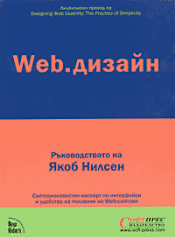 |
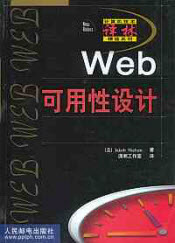 |
|
Bulgarian
|
Web 可用性设计 |
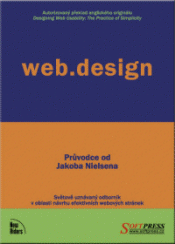 |
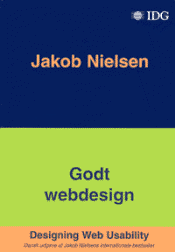 |
|
Czech
|
Godt webdesign |
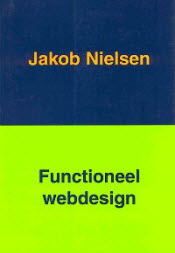 |
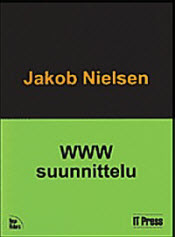 |
|
Functioneel webdesign: De kracht van eenvoud
|
Finnish WWW-Suunnittelu - Käytettävyys |
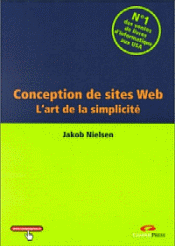 |
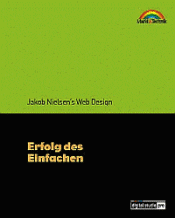 |
|
Conception de sites Web: |
Erfolg des Einfachen |
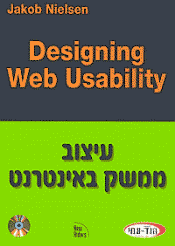 |
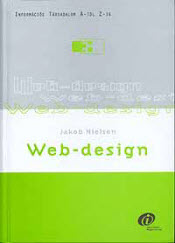 |
|
Hebrew
|
Hungarian |
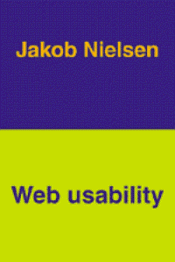 |
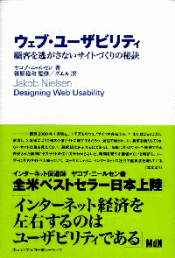 |
|
Italian at Apogeeonline.com |
Japanese at Amazon.co.jp ISBN 4-8443-5562-7 |
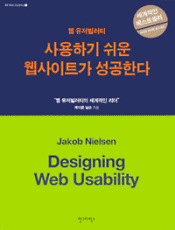 |
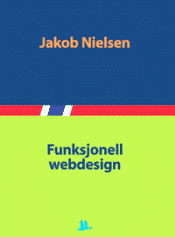 |
|
Korean |
Norwegian |
 |
 |
|
Polish at Helion.pl |
Portuguese (Brazil) |
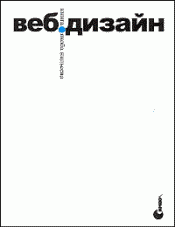 |
 |
|
Russian |
Serbian |
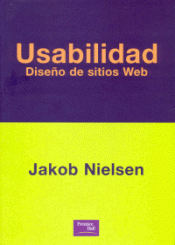 |
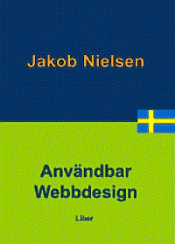 |
|
Spanish at Amazon.com |
Swedish at Prisjakt.nu |
Errata
You can tell what printing you have as follows:
- Locate the copyright page (page ii , but it's not numbered: this is on the back of the title page which shows the book name in color and just across from the "Contents at a Glance" page)
- On the middle of the page is a line of numbers looking like this:
03 02 01 00 7 6 5 4 3 2 - The rightmost number on this line indicates the printing (the above example would be for the second printing).
Addendum to 3rd, 4th, and 5th Printings
Page 330, figure caption:
There are also problems with the spelling and accents for German and Spanish; the use of Simplified Chinese characters will cause difficulties for users in Hong Kong and Taiwan. This latter issue is particularly important: when we run usability studies that involve Chinese users, we always try to include both Simplified and Traditional regions (assuming a written interface; auditory interfaces obviously have to include Mandarin, Cantonese, etc.).
Errors in 2nd and 1st Printing (Fixed in 3rd Printing)
- Page 34, figure caption: slope of recent transitions is 1% per week , not per year.
- Pages 40-41: Figure captions are reversed. Page 40 shows Internet Explorer 3.01 and page 41 shows Netscape 4.01.
- Page 209: Figure caption refers to a different example than the one used in the book. Correct caption: "In this example, I was interested in HTML tools for web design, and a click on that option would give me a list of the tools. But the display provides additional breadth by also showing me the other types of web design tools discussed on the site. Stepping up one level takes us further from the user's current interest, so less breadth is provided. The third column indicates that more information is available about other Internet-related issues, but these topics are not described in as much detail as the Web design tools. Going one step farther up, the second column lists other computer-oriented topics, but this level is described at a very coarse level of granularity."
Also, some smaller typos were found and corrected.
Errors in 1st Printing (Fixed in 2nd Printing)
- Page 35: The word "gizmo" is missing from the second paragraph.
- Page 395: The names of Louis Rosenfeld and Peter Morville are misspelled. My apologies to Louis and Peter! This is twice as embarrassing because these guys are my good friends.
Also, many smaller typos were found and corrected.
